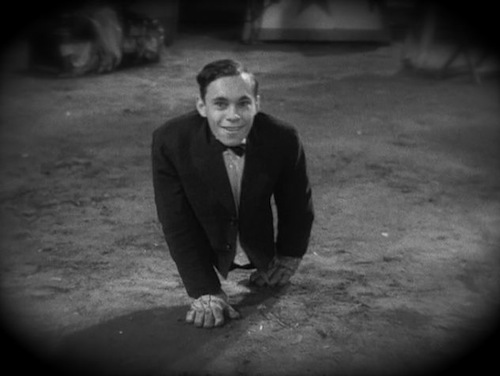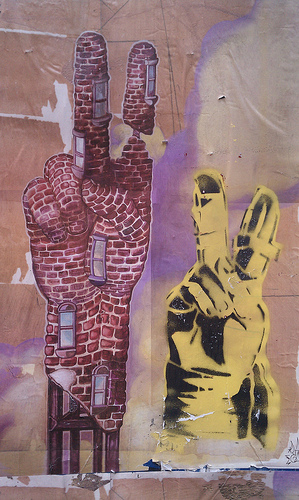I recently wrote a paper for a graduate lit class comparing 19th century literary ideals to the 1932 cult classic film Freaks. If this sounds like a heady topic for a seminar paper, trust me, it beats analyzing the social rhetoric of mid-1800s slave narratives or discussing the scientific hubris inherent in Hawthorne’s The Birthmark. I’m not a literature major and these papers don’t come easy to me in any form, but getting permission to use a landmark horror movie for a final paper was a gift from the literary heavens.
Freaks was the brainchild of director Tod Browning of Dracula fame, and it represents his first foray into talking pictures. Even today, it stands as a things-that-go-goosebumps-in-the-night story of circus intrigue, class warfare, and the ultimate penalty for just plain crossing the line. In a nutshell, the story involves the sideshow midget Hans, who dumps his midget lady love when he becomes dangerously infatuated with the normal-sized trapeze artist, Cleopatra. She and her lover, the circus strongman, Hercules, conspire to dupe Hans for his inherited fortune and then kill him. This sets in motion a tale of revenge and retribution by the sideshow freaks that ends in the horrific mutilation of Cleo and Hercules, and the return to “normalcy” of the circus culture. Good times.
The backstory is every bit as fascinating as the movie itself. The Freaks cast includes a pair of Siamese twins, a group of microcephalics or Pinheads, a Living Torso, two Armless Wonders, Half Boy Johnny Eck (pictured below), a Human Skeleton, several Bird Women, and three midgets who went on to appear as Munchkins in The Wizard of Oz (Hans was one of the Lollipop Guild). In the 1930s, there were limited roles for actors with such extraordinary physical appearance. Might I add that the situation has not changed much in 80 years, although nowadays Johnny Eck, with his resonant voice and leading man looks from the waist up, could easily have occupied the anchorman desk on the evening news. As long as no one yelled “Fire!” and he had to leave the set in a hurry, the viewer would never know.
The urban legends surrounding the movie are legion. MGM had to set up outside tables where the freaks could eat after regular diners in the commissary complained that the sight of them was too disturbing. F. Scott Fitzgerald is rumored to have seen the Siamese twins looking at a menu and he ran from the room and threw up. Supposedly, MGM wanted to borrow Myrna Loy for the role of Cleopatra, but after reading the script she begged her studio not to let her out of her contract. MGM also sent it to Jean Harlow’s agent, who basically responded with WTF? So second tier actors wound up playing the leads, but it wouldn’t have mattered who the stars were, the film got pulled from circulation shortly after it was released. Apparently the public felt the same way as the people in the commissary. The film only achieved cult status in the counterculture 1960s when it was rediscovered and embraced with fierce acceptance. By then, freak had a whole new meaning.
The most interesting factoid I discovered in writing my paper was regarding the movie’s final scene. In the original ending, the mob of knife-wielding freaks castrate the strongman Hercules and mutilate the beautiful Cleo, turning her into the Duck Woman. The film ends with Hercules singing falsetto from an opera written for the castrato, while Cleo quacks pathetically along with him. This is a perfect ending and clearly Tod Browning thought so as well. The punishment for the conspirators’ transgression is banishment from the center ring as main attractions and assignment to the sideshow of freaks. They would be together forever in their hideously altered state, a denouement of poetic justice.
But the Hollywood censors of the new Motion Picture Production Code were appalled. They feared such a horrific mutilation of even a grade B male actor would be rejected outright by the audience. So they made Browning change the ending, and now Hercules is stabbed to death. Cleo is still mutilated into a Duck Woman, only now she quacks alone. It’s an incomplete ending and one that shows the way Hollywood reflects the male gaze and marginalizes the woman. It was all too much for Browning who never recovered personally or professionally from the ordeal. The film remains a powerhouse, but the original ending has been lost forever. And with it, Browning’s brilliant quest for equality.
Click here to watch a scene from Tod Browning’s Freaks
Daughter’s Featured Fotos travel from NYC to the Southern Caribbean









